11 Creative Landscape Photography Tips & Ideas for 2025
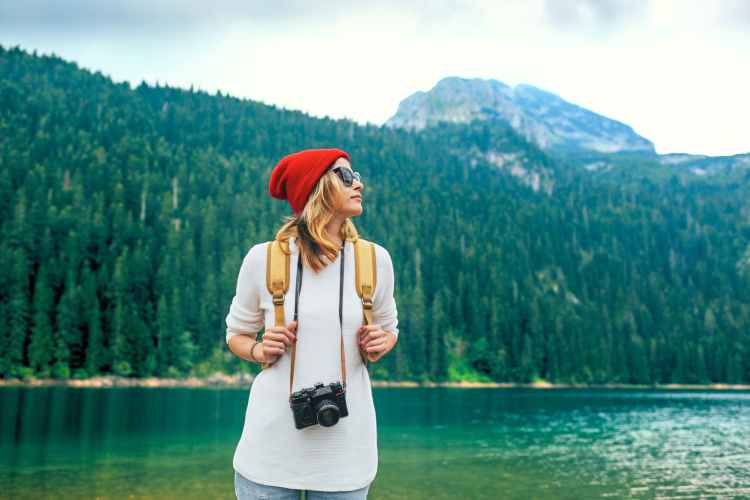
Landscape photography is a widely recognized art form that can be difficult to master. After all, have you ever taken a photo of a beautiful landscape that doesn’t turn out like you expected?
It can be a challenge to capture on camera what the human eye sees. However, it’s not impossible. By knowing the proper camera settings and creating a plan for your shoot, you can create breathtaking landscape photos.
So, what makes a photo landscape? Several elements go into capturing a stunning landscape photo, but most images include a beautiful area in nature or a unique perspective in a city. While most landscape photos are taken horizontally, they can also be captured vertically, depending on how you’d like to portray your image. Learn more with photography classes near you.
Are you ready to master landscape photography? We’ve compiled a list of the best photography tricks and ideas to learn this creative art skill.
Jump to Section
- What is Landscape Photography?
- Landscape Photography Tips for Beginners
- Professional Landscape Photography Tips
- Landscape Photography Ideas
What is Landscape Photography?

What is landscape-type photography? Landscape photography is an image that embodies the spirit of the outdoors. It can include both natural and man-made environments outdoors and be purely compositional and documentarian or enter into the realm of fine art photography.
Yale University states that research shows "the beneficial effects that exposure to the natural world has on health, reducing stress and promoting healing." So taking some landscape photos and hanging them on your wall could make you feel calmer.
Many landscape photos are iconic for including breathtaking views of mountains, lakes or canyons. There are also tons of memorable landscape photos of city skylines and rural country towns. These photos are captured with a wide lens to show the vast breadth of the environment and can be photographed horizontally or vertically.
Some of the best ways to learn this popular art form are by taking landscape photography courses and studying famous landscape photography for inspiration.
Landscape Photography Tips for Beginners
What Are the Four Essentials to a Landscape Photo?
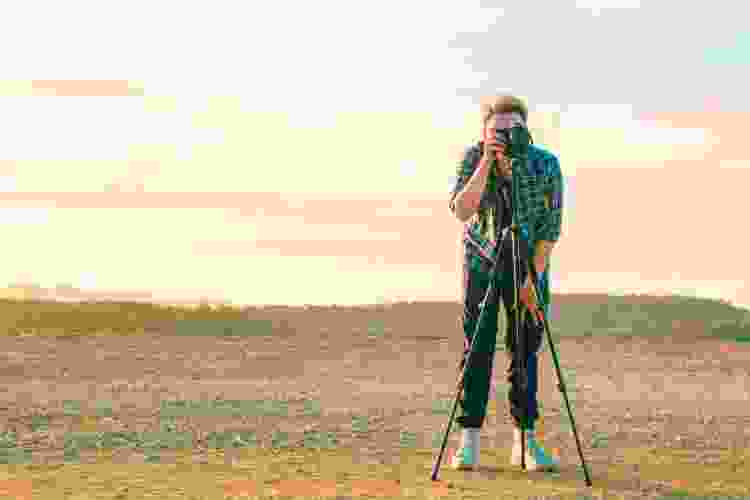
Several elements go into creating a memorable landscape photo: focal point, light, composition and the rule of thirds. Landscape photography is all about capturing the viewer’s eye and these four essentials are key to creating an engaging image.
The best landscape photos have a focal point to direct the viewer’s attention. Whether it’s a person, animal or miscellaneous object in the landscape, it’s critical to have a centerpiece in each photo.
Lighting also plays a factor in photography and helps draw the viewer’s eye to your focal point. Composition helps frame your image, whether using palm trees to outline your photo or playing with the depth of field.
Finally, the rule of thirds determines where to place your focal point in the frame. This involves placing a grid on your image with four intersecting points. The best way to captivate your viewer with landscape photography is by putting your subject in one of the intersecting focal points.
Landscape Photography Settings
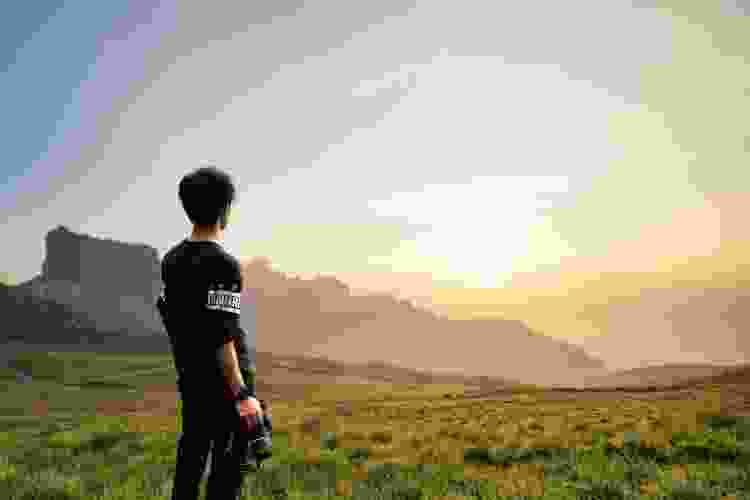
If you’re learning how to become a photographer, you’ll need to master the settings on your camera to ensure the perfect shot. By applying the proper settings, you can transform any landscape photo into a masterpiece. This starts by understanding exposure.
Exposure refers to the amount of light that reaches your camera’s sensor. A photograph can be underexposed, overexposed or at the right exposure level. Several settings on your camera lead to the correct exposure of each photo: shutter speed, aperture, and ISO.
- Shutter speed is the rate at which the shutter opens and closes after clicking the button. You can have a slow shutter speed or a fast shutter speed.
- Next, aperture is a value that determines the size of the lens iris opening and regulates the amount of light that enters the lens. This setting is measured in “F-Stops” and is followed by a number.
- Finally, ISO measures the camera’s sensitivity to light. When adjusting your settings for landscape photography, you’ll want to modify the aperture, shutter speed, and then the ISO to find the best exposure.
Professional Landscape Photography Tips
1. Plan Your Shoot

Before you set out to master landscape photography, create a schedule for your shoot day. Know where you want to shoot and learn what the light will look like throughout the day.
Many photographers enjoy shooting during sunrise or sunset, also known as “golden hour.” If you’re an early bird looking for birthday photo shoot ideas, this is one of the best times to capture captivating landscape photos.
It can also help to scout out your locations before arriving with your camera to capture photos. On your shoot day, get to your location early to set up for your perfect shot. Walk around the environment looking for different angles and perspectives to add a different dimension to each photo.
It’s also important to pay attention to the weather and determine the cloud coverage for the day since the density of the clouds will factor into your settings to achieve the correct exposure.
2. Find the Best Camera
There’s no rule for exactly what camera to use. After all, the best camera is usually the one you have with you. Whether you decide to play with the settings on your phone camera or use a DSLR, knowing the technicalities of your camera will help you capture the best photos.
Spend time learning the settings and playing with the exposure to help you master your camera before you master the art form of landscape photos. There are even some great apps and lens attachments if you're using a smartphone.
Top DSLR and point-and-shoot camera brands include Nikon, Canon, Sony, Panasonic, Fujifilm and Pentax. They come in various styles and price ranges, some with detachable lenses and others with display screens. You could even go to a thrift store and find a vintage camera to hone in your skills.
3. Have the Right Lens

You’ll also want to ensure you’re shooting with the right lens to capture landscape photography. Most professional photographers recommend using a wide-angle lens, such as a 24mm or 35mm.
These lenses will provide the best perspective when capturing landscape photos. Anything smaller than 24mm might make your photos look distorted. Watch out when using the wider lenses on your smartphone, they also tend to distort the image the wider you get. Test this by taking a picture of a friend at different widths to see how it distorts the image.
4. Understand Your Camera’s Settings
If you’re still learning proper exposure, several settings on your camera can help you achieve the perfect look for your image. Discover how to read the histogram to understand whether your photo is over or underexposed.
Lighting is a critical component in landscape photos, and using this tool will help you capture the best photo as a budding photographer.
5. Bring a Tripod
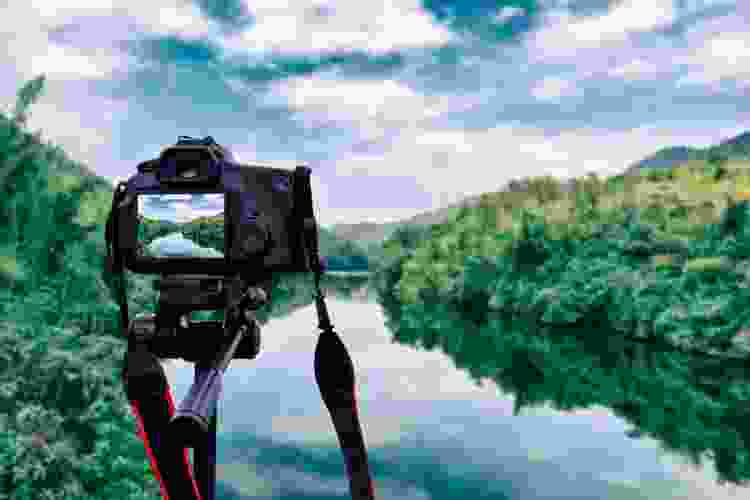
It’s essential to have the right gear on you when pursuing landscape photography. Aside from having the best lens, using other types of equipment for various types of photography can elevate your photos.
A tripod will ensure smooth shots to prevent blurry photos, especially if you’re using a slower shutter speed. Find a tripod that is light enough to travel with, but sturdy enough to handle strong winds.
Top tip: If you're doing a longer exposure image, taking a selfie or moving away from your camera, make to to weight the tripod down with a weight. You never know when the wind might pick or the camera lens will pull the camera forward onto the ground!
6. Experiment with Filters
Filters are another excellent tool you can use for landscape photography. Most professional photographers recommend polarizing filters and neutral density filters (or ND filters).
Polarizing filters can help manage reflections and glares, while ND filters cut out spare light to allow slower shutter speeds and higher ISO levels without overexposing your images. Graduated ND filters are also helpful if you’d like to balance out the exposure between the ground and the sky.
7. Use Creative Composition
There are tons of ways to elevate your composition when learning landscape photography. Try using an object in the foreground to attract the viewer’s eye. This will add more dimension to your image against the stunning landscape.
Leading lines, such as fences or a tree line, can be another artful way to create a compelling image. Experimenting with depth of field can also help draw the viewer’s eye and create dynamic landscape photos.
Consider how you want your audience to feel when they view your images and don’t be afraid to try out different perspectives and angles in your landscape photography. Kneel down, stand on a chair or hold a flower in front of the camera — you can only learn through experimentation.
8. Play with Long Exposure
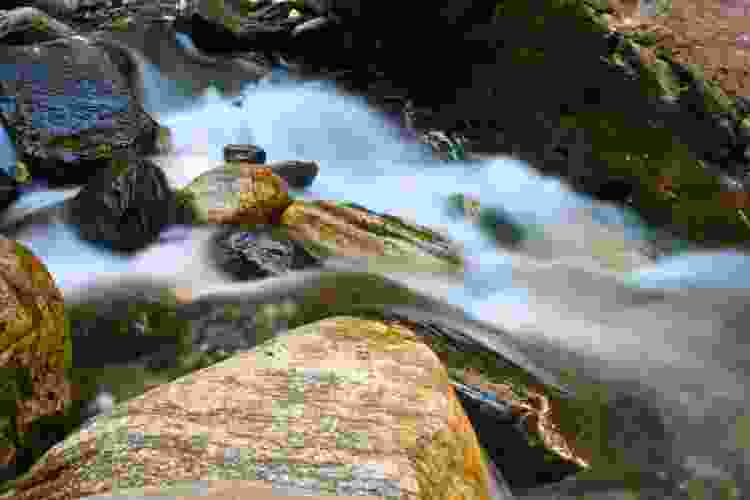
After you’ve learned the art of correct exposure, try out long exposure to level up your photography skills. Long exposure involves using a slow shutter speed to allow your camera to capture more motion within that time frame. This can lead to really cool motion blurs with city lights or shooting stars.
The best tip when using long exposure is to include a focal point in your image to draw the viewer’s eye. This technique will elevate your photo and provide a unique perspective.
9. Experiment with Your Camera Settings
Learning landscape photography is about taking risks and testing the settings on your camera. Once you have a grasp of basic camera knowledge for photography for beginners, step out of your comfort zone and explore different landscape photography settings.
Try shooting at a higher f-stop to create dynamic images with a large depth of field. Or lower your shutter speed to take riveting waterfall photos. By breaking away from traditional settings and shooting in manual mode, you can be more creative and innovative with your photos.
10. Take Your Time
Slow down and enjoy the process when learning landscape photography. Although it’s great to have a plan and vision for what you’d like to capture, it’s also important to be patient and flexible to other photographic opportunities that might come your way.
Be open to more than one specific shot and be aware of your surroundings to capture even greater landscape photos than you were expecting.
11. Edit Your Photos

After you’ve captured your photos, import them into a photo editing software, such as Adobe Lightroom or Photoshop, to add a personalized touch. Enhance the lighting or draw a deeper focus on your intended focal point in your photo.
While you can capture incredible photos with your camera on the scene, adding them to editing software can offer more creative control over your photo and give you ideas for how to capture your landscape photos the next time you go out.
Landscape Photography Ideas
Famous Landscape Photography Images
One of the best ways to brainstorm new landscape photography ideas to add to your portfolio is to explore some of the most iconic landscape images. National Geographic has several contests each year for the best photography, including the best Nature Photographer.
Scrolling the website and viewing previous entries might inspire you when it comes to crafting your own landscape photos. From silhouetted mountains cast in a dramatic light to serene lakeside views, there are tons of professional photos you can explore to help you master this artful photography.
A simple search online will bring up tons of famous landscape photos to inspire your photoshoot. You can also search images for your planned location to get an idea of how other photographers captured the scene, and how you would like to photograph the area differently. If you're looking to capture something truly spectacular, consider exploring night photography and natural light phenomena, like the Aurora Borealis in the northern U.S., where swirling colors illuminate the sky in breathtaking displays.
By studying other photographers' work, you can learn from some of the best artists and train your own creative eye.
Amazing Landscape Images for Painting
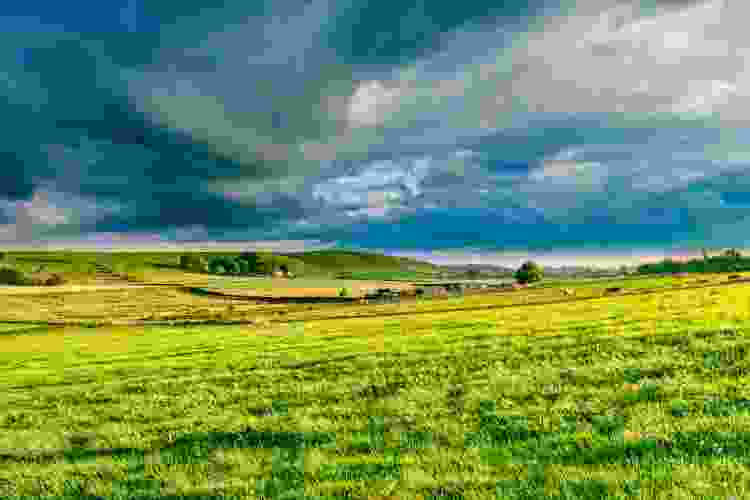
You can also transform landscape photography into a beautiful painting. Whether you’re looking to for abstract painting ideas or impressionistic paintings, painting a landscape can be an excellent artwork to add to your portfolio.
Many websites, such as Adobe and Pinterest, include beautiful selections for landscape painting ideas. One of the best ways to learn this fun art form is to take art classes to learn from a professional instructor how to translate stunning photography into a breathtaking painting.
From determining the right lens to planning out your shoot day, there are tons of tips you can absorb when learning landscape photography. Whether you choose to take landscape photography courses or study famous landscape photography images, staying inspired and learning from the best photographers can help you capture beautiful landscape photos.
As one of the most recognized art forms in photography, taking landscape photos involves patience, passion and a willingness to try something new to create a breathtaking image.
For even more fun photography ideas, check out other experiences happening on Classpop!

